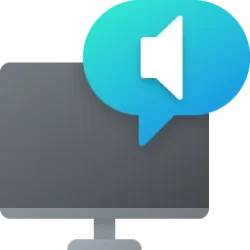Navigation
Install the app
How to install the app on iOS
Follow along with the video below to see how to install our site as a web app on your home screen.
Note: This feature may not be available in some browsers.
More options
Style variation
-
Disable Automatic Windows Updates in Windows 11
This tutorial will show you how to disable Windows Update from automatically downloading and installing updates in Windows 10 and Windows 11.- Brink
- Replies: 13
-
Use ViVeTool to Enable or Disable Hidden Features in Windows 11
This tutorial will show you how to use ViVeTool to enable or disable hidden features in Windows 10 and Windows 11.- Brink
- Replies: 49
-
Restore Classic File Explorer with Ribbon in Windows 11
This tutorial will show you how to restore the classic File Explorer with Ribbon for your account or all users in Windows 11.- Brink
- Replies: 407
-
Create Windows 11 Bootable USB Installation Media
This tutorial will show you how to create a bootable USB flash drive used to install Windows 11 with UEFI support.- Brink
- Replies: 128
-
Uninstall or Reinstall Copilot app
This tutorial will show you different ways to uninstall or reinstall the Copilot app for your account or all users in Windows 10 and Windows 11.- Brink
- Replies: 0
-
Add or Remove "Learn about this picture" Desktop icon
This tutorial will show you how to add or remove the "Learn about this picture" desktop icon when using Windows Spotlight as your desktop background for your account in Windows 11 and Windows 10.- Brink
- Replies: 27
-
Use SFC to Repair System Files in Windows 11
This tutorial will show you how to run the System File Checker (SFC) tool to repair missing, corrupted, and modified system files in Windows 10 and Windows 11.- Brink
- Replies: 25
-
Download Official Windows 11 ISO file from Microsoft
This tutorial will show you how to download an official Windows Server ISO or Windows 11 64-bit or ARM64 ISO file from Microsoft.- Brink
- Replies: 415
-
Repair Install Windows 11 with an In-place Upgrade
This tutorial will show you how to do a repair install of Windows 11 by performing an in-place upgrade without losing anything.- Brink
- Replies: 326
-
Clean Install Windows 11
This tutorial will show you step by step on how to clean install Windows 11 at boot on your PC with or without an Internet connection and setup with a local account or Microsoft account.- Brink
- Replies: 233
You are using an out of date browser. It may not display this or other websites correctly.
You should upgrade or use an alternative browser.
You should upgrade or use an alternative browser.
Tutorials
Windows 11 tutorials, tricks, tips, and guides.
This tutorial will show you how to add or remove the Choose Light or Dark Mode desktop context menu for all users in Windows 11 and Windows 10.
Windows 11 supports two color modes: light and dark. Each mode consists of a set of neutral color values that are automatically adjusted to ensure optimal contrast.
In both light and dark color modes, darker colors indicate background surfaces of less importance. Important surfaces are highlighted with lighter and brighter colors.
The Dark mode has colors that are designed to work well in a low-lit environment. This option is for the Start menu, taskbar, and action center.
The Light mode is designed to work well during daylight hours. If you choose this option, you’ll be able to Show accent...
This tutorial will show you how to add stickers to the desktop for your account in Windows 11.
Desktop Stickers is a hidden feature in Windows 11 that allows you to choose and edit stickers for your wallpaper when using Windows Spotlight or a picture with Fill as your desktop background image.
Using the new sticker editor you can pick, place, and resize stickers as you like. It can be accessed through Settings or by right-clicking your desktop.
When you change your desktop background picture, your stickers will still remain.
The Desktop Stickers feature is currently not officially released to Windows 11 yet, but if you would like to give Desktop Stickers a play with now, you can enable Desktop Stickers in Windows 11 version 22H2...
This tutorial will show you how to turn on or off using a screen saver for your account in Windows 11.
When you turn on and set up using a screen saver in Windows, it will start when user activity has been idle for a specified "wait" period of time.
You can check On resume, display logon screen to require sign in on resume from the screen saver.
Screen savers are used for these two reasons:
To protect an old CRT or plasma screen from burn-in caused by static images.
To conceal sensitive information left on a screen.
If you have more than one display, some screens savers may only appear on the main display by default.
You can either move the mouse, touch the screen, touch the touchpad, or press a key to resume from the screen...
This tutorial will show you how to add or remove the Power button on the Start menu for all users in Windows 10 and Windows 11.
The Power button on the Start menu allows you to quickly open Sign-in options, Lock computer, Sleep computer, Hibernate computer, Shut down computer, or Restart computer from the Start menu.
If wanted, you can completely remove the Power button from the Start menu.
Reference:
https://docs.microsoft.com/en-us/windows/client-management/mdm/policy-csp-start#start-hidepowerbutton
You must be signed in as an administrator to add or remove the Power button on the Start menu.
Removing the Power button on the Start menu will not prevent users from using other methods to open Sign-in options, Sleep computer...
This tutorial will show you how to add or remove Sign out in the account picture menu on the Start menu for all users in Windows 10 and Windows 11.
The account picture menu (aka: "user tile menu") on the Start menu allows you to Change account settings, Lock the computer, Sign out, or switch user.
If you like, you can completely remove Sign out in the account picture menu on the Start menu.
When you sign out of Windows, all your open windows and apps are closed, but the computer is not turned off. Another user can sign in without needing to restart the computer.
Reference:
https://docs.microsoft.com/en-us/windows/client-management/mdm/policy-csp-start#start-hidesignout
You must be signed in as an administrator to add or remove...
This tutorial will show you how to add or remove Change account settings in the account picture menu on the Start screen for all users in Windows 10 and Windows 11.
This tutorial will no longer work with the new account manager on the Start Menu in Windows 11 version 24H2 and the latest 23H2.
The account picture menu (aka: "user tile menu") on the Start menu allows you to Change account settings, Lock the computer, Sign out, or switch user.
If you like, you can completely remove Change account settings in the account picture menu on the Start menu.
Change account settings opens the Settings > Accounts > Your info page.
Reference...
This tutorial will show you how to add or remove Lock in the power menu on the Start menu for all users in Windows 10 and Windows 11.
The account picture menu (aka: "user tile menu") on the Start menu allows you to Change account settings, Lock the computer, Sign out, or switch user.
Lock is now in the power menu on the Start menu.
If you like, you can remove Lock from the power menu on the Start menu.
When you lock the computer, it protects the computer from unauthorized use when you need to step away from the PC, and don't want to sign out or shut down causing everything open to be closed.
When you lock the computer, you will be taken to the lock screen by default to dismiss and sign in when ready to continue where you left off...
This tutorial will show you how to add or remove Linux in the navigation pane of File Explorer for your account in Windows 11.
The Windows Subsystem for Linux lets developers run a GNU/Linux environment -- including most command-line tools, utilities, and applications -- directly on Windows, unmodified, without the overhead of a traditional virtual machine or dualboot setup.
WSL 2 is a new version of the Windows Subsystem for Linux architecture that powers the Windows Subsystem for Linux to run ELF64 Linux binaries on Windows. Its primary goals are to increase file system performance, as well as adding full system call compatibility. This new architecture changes how these Linux binaries interact with Windows and your computer's...
This tutorial will show you how to change the size (view layout) of desktop icons for your account in Windows 10 and Windows 11.
The desktop (Win+D) is your home screen and working space in Windows that contains the taskbar and any icons (ex: shortcuts, files, folders, etc...) you add to and arrange on the desktop.
Reference:
https://support.microsoft.com/en-us/windows/show-hide-or-resize-desktop-icons-2b9334e6-f8dc-7098-094f-7e681a87dd97
Option One: Change Size of Desktop Icons using Scroll Wheel
Option Two: Change Size of Desktop Icons using Context Menu
Option Three: Change Size of Desktop Icons using Keyboard Shortcut
Option Four: Change Size of Desktop Icons using BAT file
Change Size of Desktop Icons using Scroll Wheel
1...
This tutorial will show you how to add or remove a Personalize (classic) desktop context menu for all users in Windows 11.
The old classic Personalization settings from the Control Panel included theme settings, desktop background, color and appearance, sounds, screen saver settings, desktop icon settings, and mouse pointers.
These Personalization settings have moved to the Settings app with a new UI in Windows 11.
If you prefer to still use the classic Personalization settings from the Control Panel, you can add Personalize (classic) to the desktop context menu to make it easy to use.
While you must be signed in as an administrator to add or remove the "Personalize (classic)" context menu, all users will be able to use the context...
This tutorial will show you how to add OneDrive to the Send to context menu in Windows 10 and Windows 11.
The Send to context menu allows you to quickly send a copy of items (ex: files, folders, libraries) to Bluetooth device, Compressed (zipped) folder, Desktop (create shortcut), Documents, Mail recipient, and removable and network drives by default.
To move an item instead of copy and item, you can right click or press and hold on a file or folder, click/tap on Show more options, click/tap on Send to, press and hold the Shift key, and click/tap on a drive or folder location in the Send to context menu.
With OneDrive, you can sync files and folders between your computer and the cloud, so you can get to your files from anywhere -...
Latest Tutorials
-
Browsers and Mail Enable or Disable Preload Pages for Faster Browsing and Searching in Microsoft Edge
- Started by Brink
- Replies: 0
-
Browsers and Mail Enable or Disable Share Additional OS Regional Format with Sites in Microsoft Edge
- Started by Brink
- Replies: 0
-
Browsers and Mail Enable or Disable Text Prediction in Microsoft Edge
- Started by Brink
- Replies: 0
-
Browsers and Mail Enable or Disable Show Downloads Menu when Download Starts in Microsoft Edge
- Started by Brink
- Replies: 0
-
Site Usage Opt In or Out of New Insider Build Push Notifications from ElevenForum.com
- Started by Brink
- Replies: 0
-
Browsers and Mail Enable or Disable Export Passwords in Microsoft Edge on Windows 11
- Started by Brink
- Replies: 0
-
-
-
Accounts Enable or Disable Enhanced Anti-Spoofing for Windows Hello Facial Recognition in Windows 11
- Started by Brink
- Replies: 4
-
Tutorial Tags
android
background
battery
bitlocker
bluetooth
boot
color
context menu
copilot
defender
desktop
display
drive
edge
file explorer
folder
fonts
hyper-v
icon
keyboard
libraries
location
mouse
notifications
onedrive
outlook
pen
pointer
power
printer
recall
screenshot
search
settings
share
shortcuts
sign-in
sound
start menu
store
taskbar
terminal
theme
touch
usb
voice
wi-fi
widgets
wsa
xbox




















